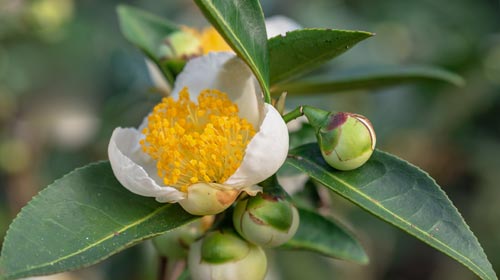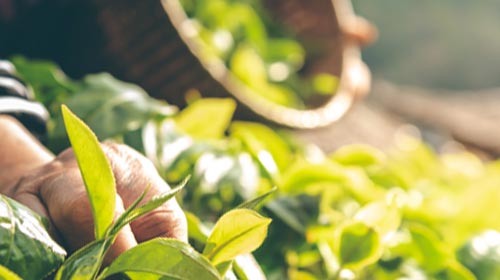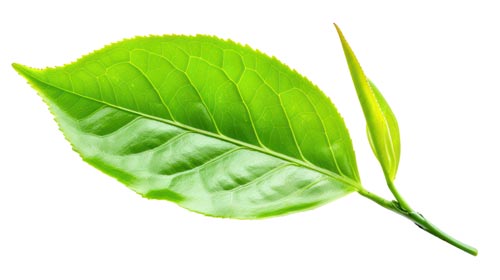The camellia blossom is something few people know about—and even fewer are consciously aware of. Yet it belongs to the same plant from which green, white, and black tea is made: Camellia sinensis. When this plant begins to bloom, it reveals a quiet side that goes far beyond the well-known benefits of its leaves.
In our tea plantations in Germany, this sometimes happens quite unexpectedly: In late autumn or winter, a delicate white camellia blossom opens between strong, lush green leaves. The stamens glow golden, and the fragrance is delicate, reminiscent of honey and jasmine. This natural spectacle is not only beautiful—it is a sign of the plant's balance.
The camellia blossom only develops when the tea plant feels comfortable. This is no coincidence: In our permaculture-managed tea gardens, we avoid chemical interventions or excessive pruning. Instead, we allow the Camellia sinensis to live its natural rhythm. The blossom is almost like a silent tribute to nature—a sign of health, strength, and trust in its location.
Botanically speaking, the camellia flower has five to seven white petals with striking yellow stamens. Unlike ornamental forms of the Camellia genus, it is rather understated and unobtrusive. This is precisely what makes it so special: It is not a show plant, but rather an expression of a functioning ecosystem.
In the industrial tea industry, the camellia blossom is often considered undesirable because it drains energy from leaf growth. At Growing Karma, we think differently: Every blossom tells a story. A story of adaptation, of seasonal change, and of true plant power. That's why we allow it – consciously and with respect.
A particularly beautiful aspect of our work is to make this beauty visible in other products as well. For example, we include a hand-picked camellia blossom in every jar of our honey. Embedded in the golden, locally sourced honey, it's not just an aesthetic element—it symbolizes the collaboration between tea plant, bee, and human. You might discover it with your first spoonful. Or not until your last. In any case, it's a sign of what grows with patience.
The camellia blossom is a rarity in Europe. Anyone who cultivates a tea plant in their garden or in a pot may one day be able to enjoy this tiny white flower. And once you've seen it, it's not a memory you'll soon forget.
Because it represents more than just flowering. It's a symbol of the vitality of cultivation. Of natural cycles. Of trust in the process.
And perhaps, with your next cup of tea, you'll think not only of the leaves, but also of what the plant has been allowed to reveal—in the form of a silent yet impressive camellia blossom.




Leave a comment
This site is protected by hCaptcha and the hCaptcha Privacy Policy and Terms of Service apply.